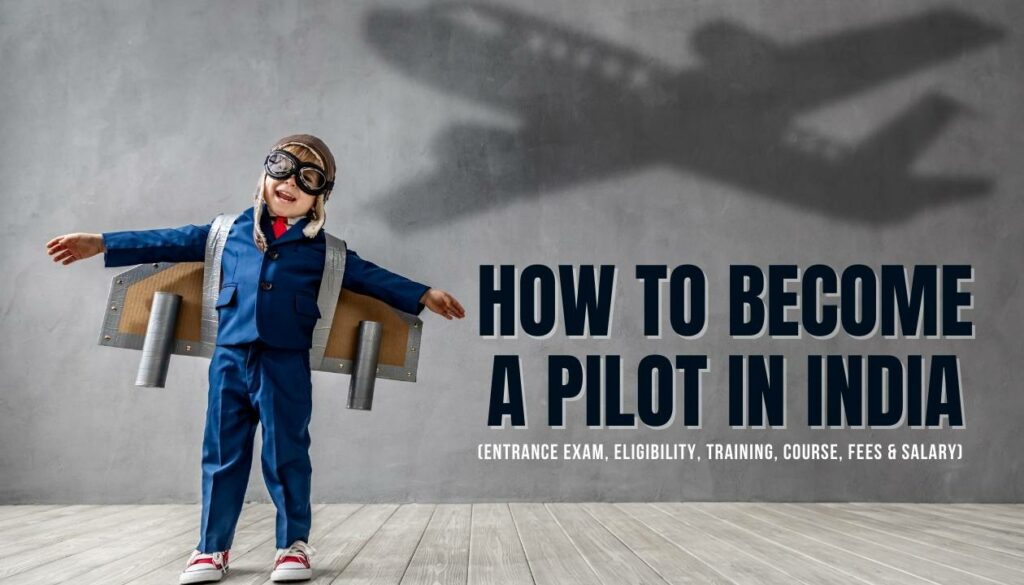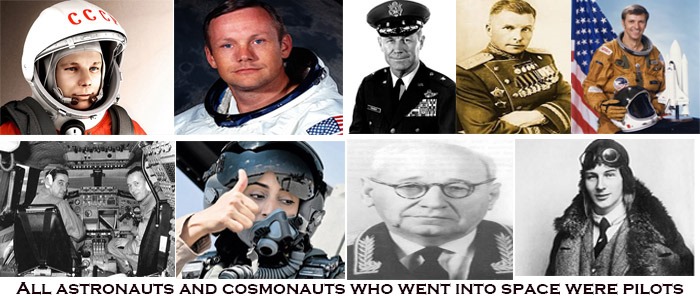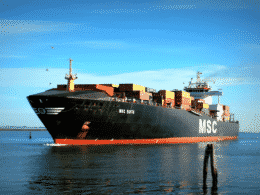Every child dreamt of flying. Some wished to fly as passengers, while others wanted to become pilots, taking aircraft soaring into the skies.
Most kids have possessed at least one toy aeroplane or helicopter. The urge to scale new heights, especially travel in clouds, is an innate instinct of humans. They attempted to imitate birds for centuries and fly across every inhabited continent.
Esoteric gods and deities are depicted with wings. Over the last five centuries, human flight was evolved from hot air balloons and giant kites to gigantic modern passenger aircraft and small supersonic fighter jets.
These modern-day contraptions capable of taking on skies work on the skills of a single human- the Pilot.

Table of Contents
Types of pilots
Modern aviation demands various classifications of the crew who fly these highly sophisticated machines. Pilots nowadays can be classified into a few broad categories.
1) Helicopter pilots: Those who fly civilian or military helicopters.
2) Fighter/ combat pilots: Pilots trained to fly fighter planes at supersonic speeds.
3) Commercial pilots: Highly experienced pilots flying passenger aircraft.
4) Sports/ Amphibian pilots: Pilots can take off and land hydroplanes over water.
5) Freighter pilots: Crews who fly gigantic freighter aircraft.
6) Balloonists: Hobbyists who soar into the skies using hot air balloons.
7) Surveillance pilots: Extremely skilled military pilots who fly at extreme altitudes.
8) Hobby aviators: People who own and pilot their small propeller aircraft.
9) Test pilots: Extremely skilled daredevils who test new aircraft models.
10) Space pilots: Usually, former military pilots are trained to fly space shuttles.
Flying as profession
The obsession with flying grew stronger among humans post-December 17, 1903, after Orville and Wilbur Wright made their first mechanized flight at Kill Devil’s Hill near Dayton, Ohio.
Their primitive flight of a few hundred meters led to the rapid development of aviation.
Thanks to advances in various fields, it is now possible to take lessons at flying schools to become a pilot.
Flying is a very lucrative profession in most countries. Commercial piloting ranks among the highest-paid professions in the world. Pilots are responsible for ferrying hundreds of passengers between two distant locations.
Modern-day pilots require a multitude of skills. Proficiency in math and physics, superior physical and mental fitness, alert mind, and ability to respond instantaneously to crises are some talents required of a pilot. These skills apply to all pilots, without exception.
Career as a pilot
A career as a Pilot is excellent for teenagers who retain their childhood dream of soaring into the skies. It is a very lucrative profession anywhere in the world. The average salary of a skilled commercial pilot is Rs. 2,50,000 per month, which increases with experience and seniority.
Commercial and freighter pilots travel around the world and see exotic countries as part of their work. They train juniors freshly out of aviation schools.
Pilots are skilled in providing assistance during in-flight medical emergencies, including cardiac arrests and deliveries. Fighter pilots serve their country, ensuring its aeronautical, maritime, and land frontiers are safe against enemies and terrorists.
Helicopter pilots carry vital cargo, medical personnel, and engineers between two locations inaccessible by other modes of transport.
Balloonists are known for assisting in meteorology and cartography. Hobby aviators are helpful for crop dusting and rushing medical assistance to individuals or communities facing calamity.
Surveillance pilots provide vital data required to safeguard the world against terrorist nuclear threats by rogue nations.
Legendary pilots of the world
All astronauts and cosmonauts who went into space were pilots.

- Yuri Gagarin, the first human in space, was a military pilot of the erstwhile Soviet Union.
- Neil Armstrong, the first human to set foot on Moon, was also a pilot.
- Charles Elwood (Chuck) Yeager was the first Pilot to cross the sound barriers and fly supersonic.
- A US Air Force pilot, Joe Engle, took his plane 280,600 feet above ground level, on the border of Earth’s atmosphere and space, paving the way for space exploration.
- Brian Trubshaw and John Cochrane piloted the maiden flight of the world’s only supersonic commercial airliner, Concorde, in 1969.
- In 1991, Indian civilian and military pilots conducted the world’s single-largest evacuation of civilians, from Kuwait, Iraq, and Saudi Arabia, before Gulf War.
- Miriam Al Mansouri of the United Arab Emirates Air Force became the first woman combat pilot to launch attacks against the terrorist network Islamic State in Iraq and Syria (ISIS).
- Civilian and military pilots from India braved enemy fire and cratered runways to evacuate stranded compatriots and foreigners from war-torn Yemen in 2015.
- Successful aircraft companies were launched by test or design pilots, including Sergey Vladimirovich Ilyushin, Andheri Nikolayevich Tupolev, and Antony Fokker, to name a few.
How to Become a Pilot in India
You need not undergo rigors similar to the legendary Orville and Wilbur Wright. Modern flying schools have rendered it easy to learn the skill. In most countries, teenagers qualify as trainee pilots after they attain 16 years of age. Rules for flying differ in various countries.
Qualifications to become a pilot:
For Indian Air Force
- Minimum qualification: SSC or HSC
- Minimum Age: 18 years
- Excellent English language skills
- Very high physical and mental fitness standards as defined by Indian Air Force
- You need to pass entrance exams to qualify for basic airman training with Indian Air Force.
For Private institutions
- Minimum qualifications: SSC or HSC
- Maximum age: 18 years
- Excellent English language skills
- Level-2 medical and mental fitness certificate
- Basic entrance exam at some private flying schools
Pilot Training & Courses in India
Here are some of the best courses and training for becoming a pilot in India. You can visit the sites and check the course fee and training cost.
Pilot Salary in India
Pilots draw very high salaries in India.
Indian Air Force:
Salaries of IAF pilots are commensurate with those stipulated by wage boards of the Ministry of Defense and the Indian Armed Forces.
They vary according to rank and do not depend on the aircraft type.
Commercial Airlines:
Salaries are the same for passenger and freighter pilots
Pilots beginning as First Officers usually draw between Rs. 80,000 to Rs. 150,000 per month on commercial airlines of India.
Flight commanders are paid salaries in excess of Rs.350,000.
Private pilots
These include pilots of helicopters and small aircraft owned by organizations or individuals.
Around Rs. 100,000 per month
Important points for becoming a pilot
- Those wishing to learn to fly have two options. They can enroll and qualify to study flying with the country's armed forces. Or they can attend state-run or private flying schools that flourish around the world.
- Excellent physical and mental fitness is demanded by military and civilian flying schools.
- Academic qualifications required to enter a flying school vary by country. Some countries limit flying schools to graduates of aeronautical engineering. In others, higher secondary qualifications suffice.
- The introductory Private Pilot course of 30 to 60 days costs about US$ 10,000 in the US. This excludes rent for trainer aircraft. Hiring a trainer aircraft depends upon the number of hours a student needs to learn with a flying instructor.
- Flying is taught and accessible to military pilots. They are required to compulsorily serve their nation’s armed forces for a fixed number of years in lieu of this training.
Flying is not enough
In almost every country, the knowledge of handling an aircraft is insufficient to qualify as a Pilot. Some require additional training. This includes
- Instruments Rating Training: To learn about the cockpit instruments of an aircraft.
- Instruments Check Training: An advanced course that teaches how to check various onboard instruments essential to flights.
- Meteorological and weather training: Budding pilots are trained on how to manage flying in various weather conditions.
- Non-fixed wing aircraft training: This training is taken by helicopter pilots.
Myriad other courses are required for a student or Private Pilot to get ratings as Commercial Pilot. These include training in first aid and medical emergency.
Conversion to flying different aircraft types is vital to graduate from flying small, private aeroplanes to gigantic modern airliners. It also involves hands-on training on aircraft, flying with an instructor or solo.
The best way to get free advanced training is to join as trainee pilot in any large airline. Military aviation schools offer this training as part of curriculum and skills upgrade.
Important Note: The number of flying hours- solo and under instructor- required to qualify for various higher licenses differs by countries.
In some countries, a pilot with 3,000 flying hours experience can join an airline as a co-pilot, while others stipulate a minimum of 5,000 flying hours. Highly experienced pilots usually possess 10,000 and above flying hours.
Working as a commercial Pilot
Working as a Pilot is exciting and fun. Commercial and freighter pilots take their company’s aircraft to distant lands.
Under International Civil Aviation Organization (ICAO) and International Air Transport Association (IATA) laws, they are entitled to a few hours or a couple of days ‘layover’ or statutory leave at their destination.
Food and accommodation costs are met by the airline.
Low Cost Carriers: These no-frills airlines offer cheap tickets, no in-flight meals, and less free-baggage allowance. They hire pilots with 3,000 to 5,000 flying hours. Their flights are generally of 45 minutes to two hours in duration. They are placed as co-pilots, with more seasoned pilots as commanders.
Conventional long-haul airlines: These carriers operate long distance flights between countries and continents. Some of these flights span 12 or more hours, non-stop. They hire former military pilots and upgrade their skills in flight simulators and on-hand training. Flight commanders usually possess about 10,000 flying hours of experience.
Freighter airlines: Airlines or cargo carriers hire a mix of pilots based on their routes. Seasoned pilots are teamed with those who have a lesser experience. Flying freighters is complex. Due to the heavy payload, it requires a very high level of landing, cruise, and take-off skills.
Private pilots: Companies, millionaires, and prominent personalities who own executive jets hire private pilots. They fly only when required by the employer.
Helicopter pilots: In recent years, helicopter pilots have become more prominent. Helicopters are used for a variety of purposes. They help in disaster mitigation and provide food, medical aid, and other essentials to calamity victims. Helicopter pilots are in great demand in oil exploration companies having rigs in high seas or in mountainous regions of the world. Helicopter pilots also save lives by flying airborne ambulances.
Types of aircraft and pilots
All students at flying schools generally learn on small, single, or twin-engine propeller planes. Part of their studies is conducted on flight simulators. Simulators resemble an aircraft cockpit, complete with controls.
Trainers simulate various conditions that are experienced in real-life flying. Pilots are trained to handle fixed-wing jets, fixed-wing propellers, fixed-wing rotors, gyrating wings,s and rotor aircraft.
Hazards of learning flying
A pilot’s course and profession is rife with hazards. Prime among them is a mechanical failure of aircraft or instrument failure. Often, these cause aircraft to crash with fatalities.
Rising terrorism threats across the world have rendered a pilot’s job more dangerous. They are prone to hijackings and terror attacks while flying.
Over decades, hundreds of pilots have suffered mental disorders due to prolonged flying hours requiring extra alert mind and thought. Military pilots who witness action during wars sometimes suffer emotional disorders and other ailments.






